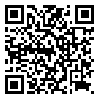1. Sharma I. An investigation into the differences in parenting of children with an anxiety disorder compared to children in a community sample [PhD dissertation]. [Manchester, UK]: Faculty of Medical and Human Sciences, The University of Manchester; 2010.
2. Steinsbekk S, Ranum B, Wichstrøm L. Prevalence and course of anxiety disorders and symptoms from preschool to adolescence: a 6-wave community study. J Child Psychol Psychiatry. 2022;63(5):527-34. [
DOI]
3. Scharfstein LA, Beidel DC. Social skills and social acceptance in children with anxiety disorders. J Clin Child Adolesc Psychol. 2015;44(5):826–38. [
DOI]
4. Wood J. Effect of anxiety reduction on children's school performance and social adjustment. Dev Psychol. 2006;42(2):345–9. [
DOI]
5. Dibben C, Playford C, Mitchell R. Be (ing) prepared: guide and scout participation, childhood social position and mental health at age 50—a prospective birth cohort study. J Epidemiol Community Health. 2017;71:275–81.
6. Colonnesi C, Draijer EM, Jan J. M. Stams G, Van der Bruggen CO, Bögels SM, Noom MJ. The relation between insecure attachment and child anxiety: a meta-analytic review. J Clin Child Adolesc Psychol. 2011;40(4):630–45. [
DOI]
7. King MG, Newnham K. Affective anomia: an interventional focus for attachment disorder. Australian Journal of Educational & Developmental Psychology. 2008;8:103–13.
8. Cornell T, Hamrin V. Clinical interventions for children with attachment problems. J Child Adolescent Psych Nursing. 2008;21(1):35–47. [
DOI]
9. Berlin LJ, Zeanah CH, Lieberman AF. Prevention and intervention programs for supporting early attachment security. In: Cassidy j, Shaver PR; editors. Handbook of attachment: theory, research and clinical applications. New York: The Guilford Press; 2008.
10. Allen B, Timmer SG, Urquiza AJ. Parent–Child Interaction Therapy as an attachment-based intervention: theoretical rationale and pilot data with adopted children. Child Youth Serv Rev. 2014;47:334–41. [
DOI]
11. Pincus DB, Eyberg SM, Choate ML. Adapting parent-child interaction therapy for young children with separation anxiety disorder. Educ Treat Children. 2005;28(2):163–81.
12. De Carli P, Tagini A, Sarracino D, Santona A, Parolin L. Implicit attitude toward caregiving: the moderating role of adult attachment styles. Front Psychol. 2016;6. [
DOI]
13. Comer JS, Puliafico AC, Aschenbrand SG, McKnight K, Robin JA, Goldfine ME, et al. A pilot feasibility evaluation of the CALM program for anxiety disorders in early childhood. J Anxiety Disord. 2012;26(1):40–9. [
DOI]
14. Niec LN, Barnett ML, Prewett MS, Shanley Chatham JR. Group parent–child interaction therapy: A randomized control trial for the treatment of conduct problems in young children. J Consult Clin Psychol. 2016;84(8):682–98. [
DOI]
15. Legerstee JS, Garnefski N, Jellesma FC, Verhulst FC, Utens EMWJ. Cognitive coping and childhood anxiety disorders. Eur Child Adolesc Psychiatry. 2010;19(2):143–50. [
DOI]
16. March JS, Parker JDA, Sullivan K, Stallings P, Conners CK. The Multidimensional Anxiety Scale for Children (MASC): factor structure, reliability, and validity. Child Adolesc Psychiatr Clin N Am. 1997;36(4):554–65. [
DOI]
17. Sinha AKP, Singh RP. Manual for Adjustment Inventory for School Students (AISS). Agra, India: National Psychological Corporation; 1993.
18. Mashhadi A, Soltani shal R, Mirdoraghi F, Bahrami B. Vizhegi haye ravan sanji meghyas chand bo’di ezterab koodakan [Psychometric properties of the multidimensional scale of child anxiety]. Journal of Applied Psychology. 2012;6(1):70–87. [Persian]
19. Akbari M, Arjmandnia AA, Afrooz GA, Kamkari K. The effectiveness of mindfulness training on social-emotional adjustment of students with dyscalculia. Journal of Empowering Exceptional Children. 2016;7(3):8–16. [Persian]
20. Dehghani Y, Hekmatian Fard S, Kamran L. Effectiveness of emotional regulation training in improving adaptability and social adequacy of students with learning disabilities. Quarterly of Applied Psychology. 2019;13(2):229–50. [Persian]
21. Puliafico AC, Comer JS, Pincus DB. Adapting parent-child interaction therapy to treat anxiety disorders in young children. Child Adolesc Psychiatr Clin N Am. 2012;21(3):607–19. [
DOI]
22. Cartwright-Hatton S, McNally D, Field AP, Rust S, Laskey B, Dixon C, et al. A new parenting-based group intervention for young anxious children: results of a randomized controlled trial. J Am Acad Child Adolesc Psychiatry. 2011;50(3):242–51. [
DOI]
23. Jahanbakhsh M, Bahadori MH, Amiri Sh, Jamshidi A. Effect of attachment-based therapy on mental health in girls with attachment problems. Journal of Fundamentals of Mental Health. 2012;14(2):140–51. [Persian] [
Article]
24. Chaffin M, Silovsky JF, Funderburk B, Valle LA, Brestan EV, Balachova T, et al. Parent–child interaction therapy with physically abusive parents: efficacy for reducing future abuse reports. J Consult Clin Psychol. 2004;72(3):500–10. [
DOI]
25. Choate ML, Pincus DB, Eyberg SM, Barlow DH. Parent-child interaction therapy for treatment of separation anxiety disorder in young children: a pilot study. Cogn Behav Pract. 2005;12(1):126–35. [
DOI]
26. Chase RM, Eyberg SM. Clinical presentation and treatment outcome for children with comorbid externalizing and internalizing symptoms. J Anxiety Disord. 2008;22(2):273–82. [
DOI]
27. Mohammadi Pour M, Mazarei Stodeh A. Effectiveness of attachment-centered intervention to improve parent-child relationship and reduce symptoms of separation anxiety in 7–10 year–old children. Journal of Applied Psychology. 2018;12(2):223–42. [Persian] [
Article]
28. Puliafico AC, Comer JS, Albano AM. Coaching approach behavior and leading by modeling: rationale, principles, and a session-by-session description of the CALM program for early childhood anxiety. Cogn Behav Pract. 2013;20(4):517–28. [
DOI]
29. Frank AJ. The sequelae of attachment in children at-risk for insecure attachment [PhD dissertation]. [Buffalo, New York]: Department of Counseling and Educational Psychology, University of New York; 2001.
30. Belsky J, Booth-LaForce CL, Bradley R, Brownell CA, Burchinal M, Campbell SB, et al. Infant-mother attachment classification: risk and protection in relation to changing maternal caregiving quality. Dev Psychol. 2006;42(1):38–58. [
DOI]

 ، پرویز شریفی درآمدی2
، پرویز شریفی درآمدی2 
 ، محمد عسگری3
، محمد عسگری3 
 ، فرنگیس کاظمی4
، فرنگیس کاظمی4 




